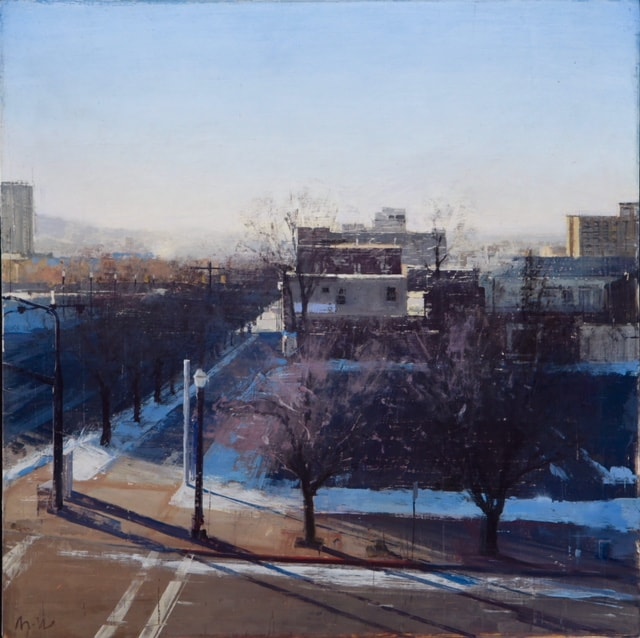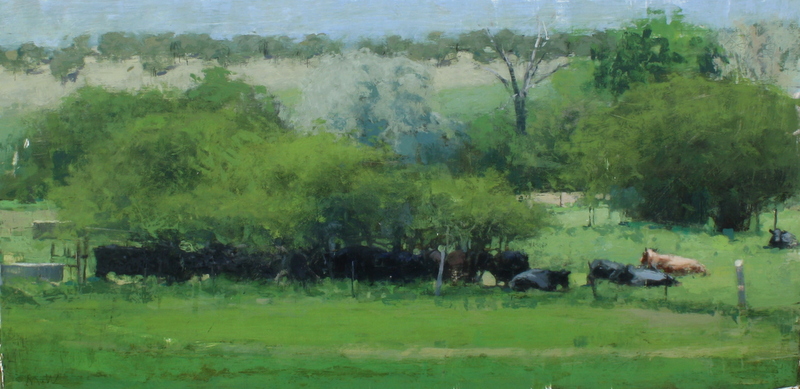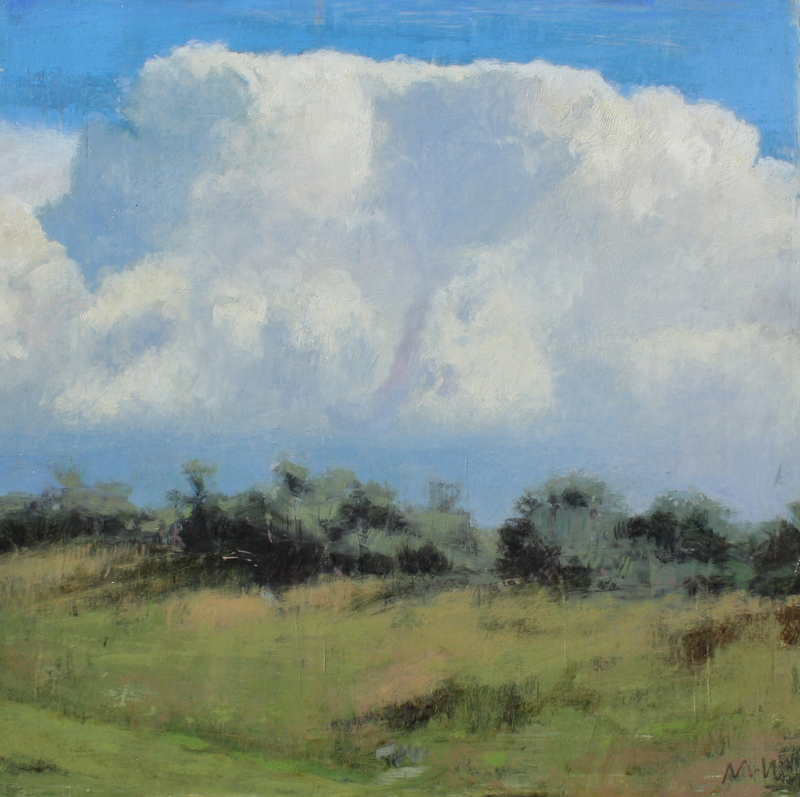To view artist Michael Workman’s paintings is to spend a quiet moment in a serene locale, where life’s rough edges are somehow absorbed. Workman’s rural landscapes are subtle yet powerful, evoking strong emotions in those who experience their silent wonder. Whether it is a silvery evening slipping soundlessly into the dusk or a bashful sun, tentatively extending its rays across a vast green pasture awake but still yawning, Workman’s tonal paintings create a mood that is both mysterious and compelling, yet never disquieting. His color, texture and light are soft and harmonious, creating a dreamy effect.
A native of Utah, Workman paints what he loves, the rural landscape surrounding his home, a Mormon pioneer town, which happens to be his favorite place on earth. “I look for things that are beautiful without being overly syrupy or sweet. I’m trying to do things that are not just copies of nature. I’m trying to say things, create an emotional response,” he says. “It’s a challenge because I don’t want to be a cliche. I don’t want to paint calendar art.” Given his success – Workman’s art has won wide acceptance by collectors, artists, academics and critics – that is not likely to happen.
The artist is committed to pursuing what he describes as a never ending journey, estimated time of arrival unknown. “To become an artist is a long hard climb up a steep mountain. You can only stop and rest for awhile,” Workman says, his tone introspective. “Art is a personal thing. It should be unique. I once had an art professor who said: “What art is really about is chasing the illusive phantom.” A commitment such as this requires a strong sense of self, as well as courage, qualities Workman obviously possesses.
The artist’s natural talent was evident at an early age. As a kindergartner, he remembers bringing art work home with the adults commenting: “He’s very talented,” Workman recalls, “I didn’t know that I would make a living at art until I was in my twenties. This is the thing I’ve been best at.” He studied painting and drawing at Brigham Young University, where he received his B.F.A. and M.F.A.
While still in school, Workman gave a lot of thought to what art meant to him personally. “I remember as a graduate student that there was an emphasis on contemporary art. A lot of contemporary art focuses on the negative. I decided early on that it doesn’t take a lot of courage to emphasize the negative,” he says. “I struggle with being positive; it doesn’t come naturally to me.”
Workman also realized that in order to distinguish his landscapes he would have to go beneath the visible surface and mine the rich emotional layers that lay below. The works of tonalist George Inness, who believed art should trigger emotions, inspired him. “Inness was very much a tonalist and a spiritual guy,” Workman says. “His greatest work became very spiritually oriented.” Workman cannot recall if he consciously set out to be a tonalist, but it seemed like a natural fit. “I once read that every painting is a self portrait.”
After he graduated, Workman became an architectural illustrator. The experience left a mark on his art. “I worked on a hard surface. You get used to it,” he explains. Workman still paints on plywood panels. “I don’t do a lot of preliminary work. It’s easy to scrape back. This method works best for my spontaneous approach.” This technique also adds depth and richness to the overall effect.
As his career progressed, Workman found that his focus changed. “You go through a stage where you think it’s all about technique, now I’m more concerned about personal expression,” he says. “But it’s a tightrope. Technique and expression need to go together.”
Workman has entered another phase critical in his commitment to fully develop as an artist. In other words, he has embarked on the next step of his journey. “You can be a very mediocre painter and make a good living at it. The art market allows that,” he says. “I look at my work and wonder if I measure up to the great artists that I respect. So I keep pushing myself to be better. I had a professor who once said: “To imitate is bad, even if you’re imitating yourself.”
The changes Workman envisions are not radical. “I’m not just looking for something new. That leads to shock art, and that’s a dead-end street,” he explains. “I’m digging deep for something more personal that’s unique.”
To aid in his personal quest, Workman is studying artists who inspire him, including Van Gogh. “My work does not resemble his, but his lust for life has had a profound experience on me,” Workman says. “Another modern painter who has influenced me is Mark Rothko.” Workman is trying to get a stronger abstract color field quality into his work yet remain true to his landscapes.
In the past, Workman has painted primarily in the studio. Now, he’s trying his hand at plein-air painting, but not out of a sense of competition with other landscape artists. For Workman it is simply a matter of pushing, chasing the illusive phantom. “Any creative pursuit involves doing it as if the money is not important,” he says. “You must strive for excellence. Go deeper than you’ve ever gone before. That’s what art is all about, having those kinds of experiences.”





























